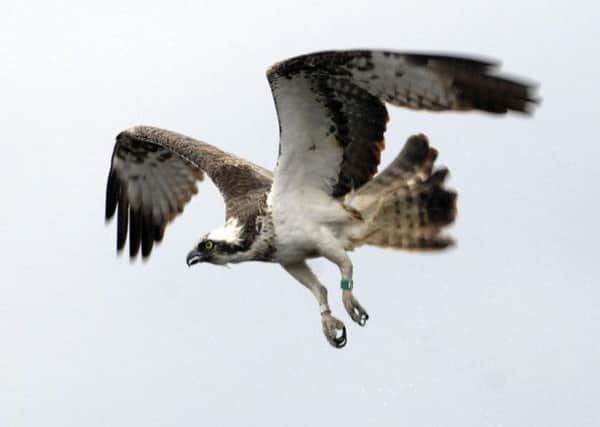Rise in number of birds of prey crimes


Twenty bird of prey crimes were recorded in 2015 including six poisoning incidents. The birds involved in these incidents include buzzards, red kites, peregrine falcons, goshawks, osprey and a hen harrier. Poisoning was the most frequently recorded bird of prey crime, but there were also five shootings, five cases of disturbance, three trapping or attempted trapping offences and one chick theft.
Minister for Environment, Climate Change and Land Reform, Dr Aileen McLeod said: “Whilst these figures only show a small increase in the number of crimes against birds of prey over the last year, it is very disappointing not to see a decrease in the number of incidents.
Advertisement
Hide AdAdvertisement
Hide Ad“I want to be clear that wildlife crime is not acceptable in a modern Scotland and this is why we are doing all we can to end the illegal killing of birds of prey and working in partnership with stakeholders to achieve that. Scotland already has the strongest wildlife legislation in the UK and last month I accepted proposals from the wildlife crime penalties review group to introduce tough new maximum penalties for those who commit crimes against wildlife. This sends out a clear message to those who commit crimes against birds of prey – that this will not be tolerated.
“In 2012 we implemented the vicarious liability provisions in relation to offences involving wild birds and last year we secured the second conviction under these provisions. Last year, we also funded the free pesticide disposal scheme which removed over 700kg of illegally held poisons in Scotland, to allow those still in possession of illegal substances to have them removed.”
Ian Thomson, RSPB Scotland’s head of investigations said: “While we welcome recent initiatives led by the Scottish Government to bear down on the criminals targeting birds of prey, it is clear that there are still a significant number of people prepared to ignore the laws protecting these species. These latest figures make it readily apparent that claims of a decline in the illegal killing of raptors are wholly without foundation. A growing weight of peer-reviewed scientific research gives clear evidence that the persecution of golden eagles, peregrines and hen harriers is widespread in many upland areas of eastern and southern Scotland. It is long overdue that the criminal targeting of protected raptors was consigned to history.”
Detective Chief Superintendent Sean Scott, chairman of the PAW Scotland Raptor Group, added: “Police Scotland is committed to tackling wildlife crime and reducing the number of crimes against our iconic birds of prey. We will continue to work with partners and the public to protect Scotland’s wildlife.”